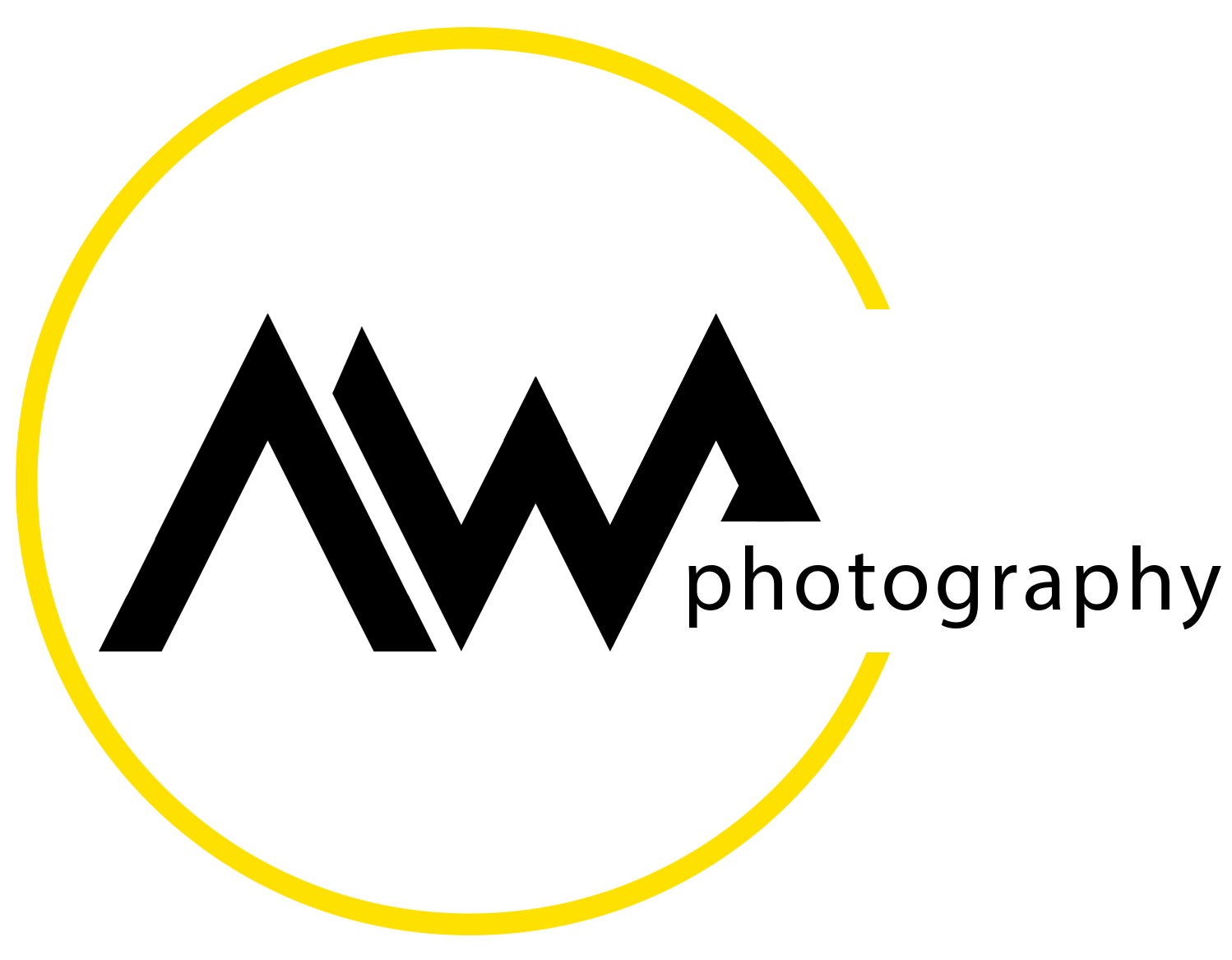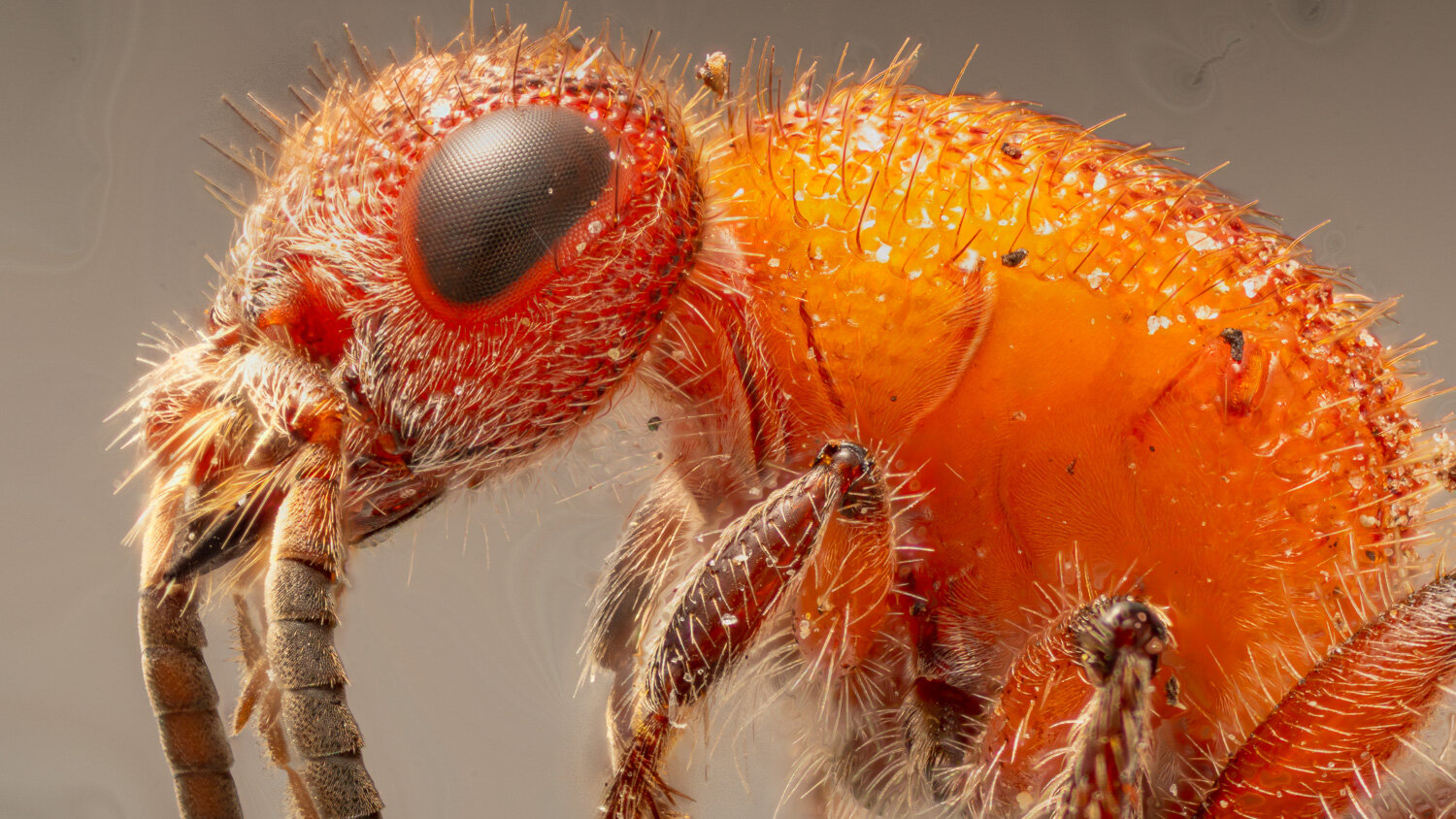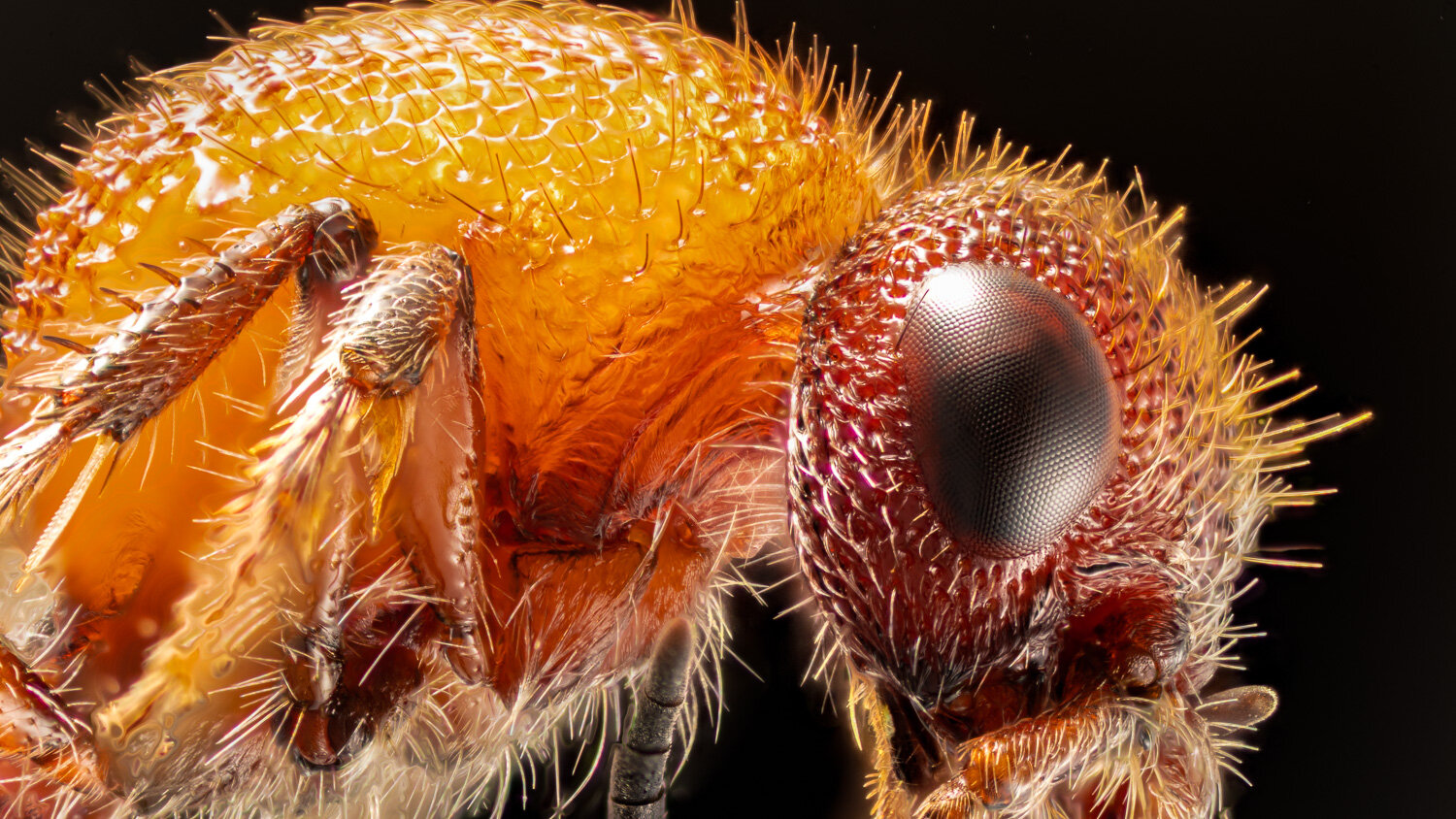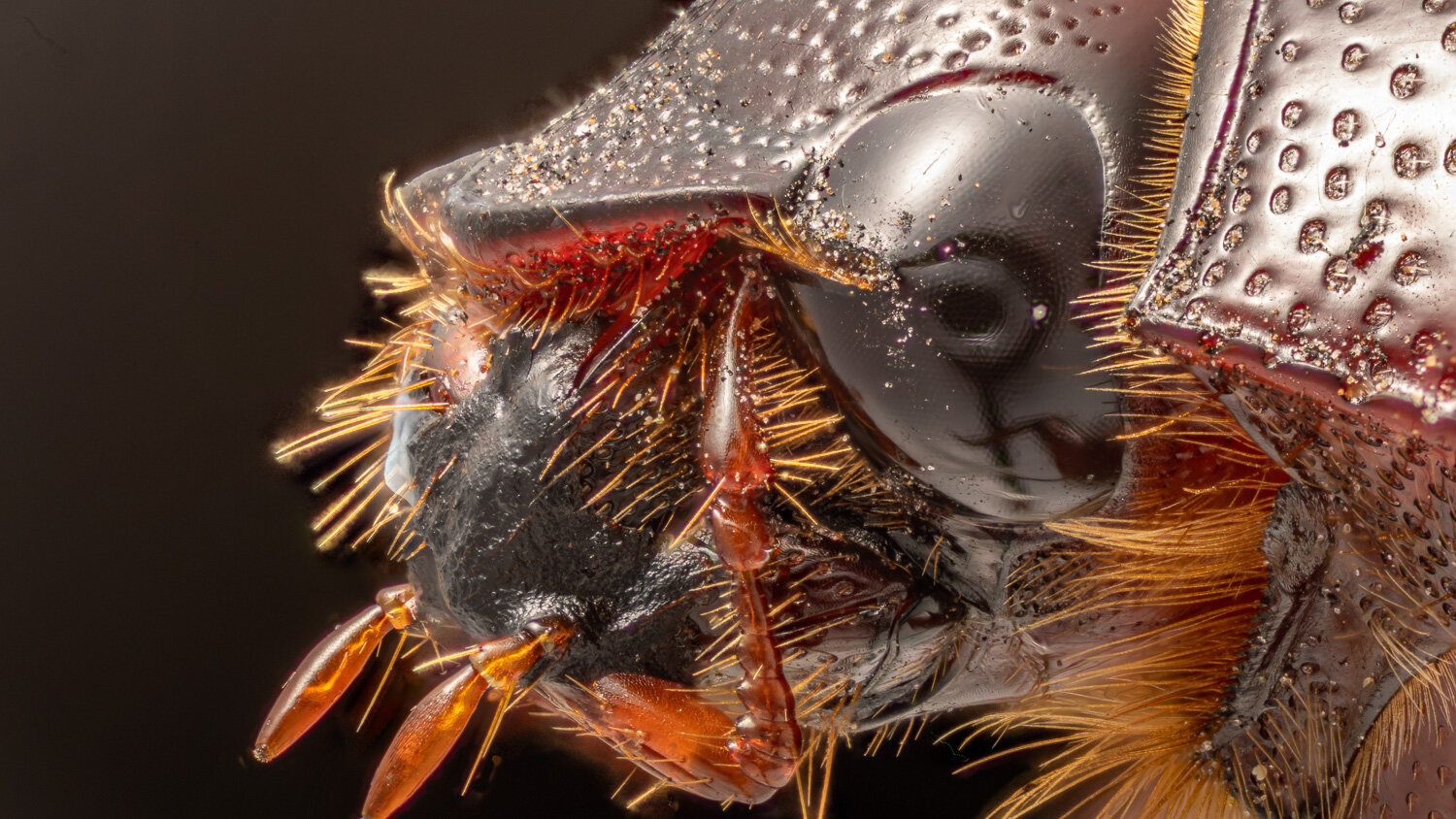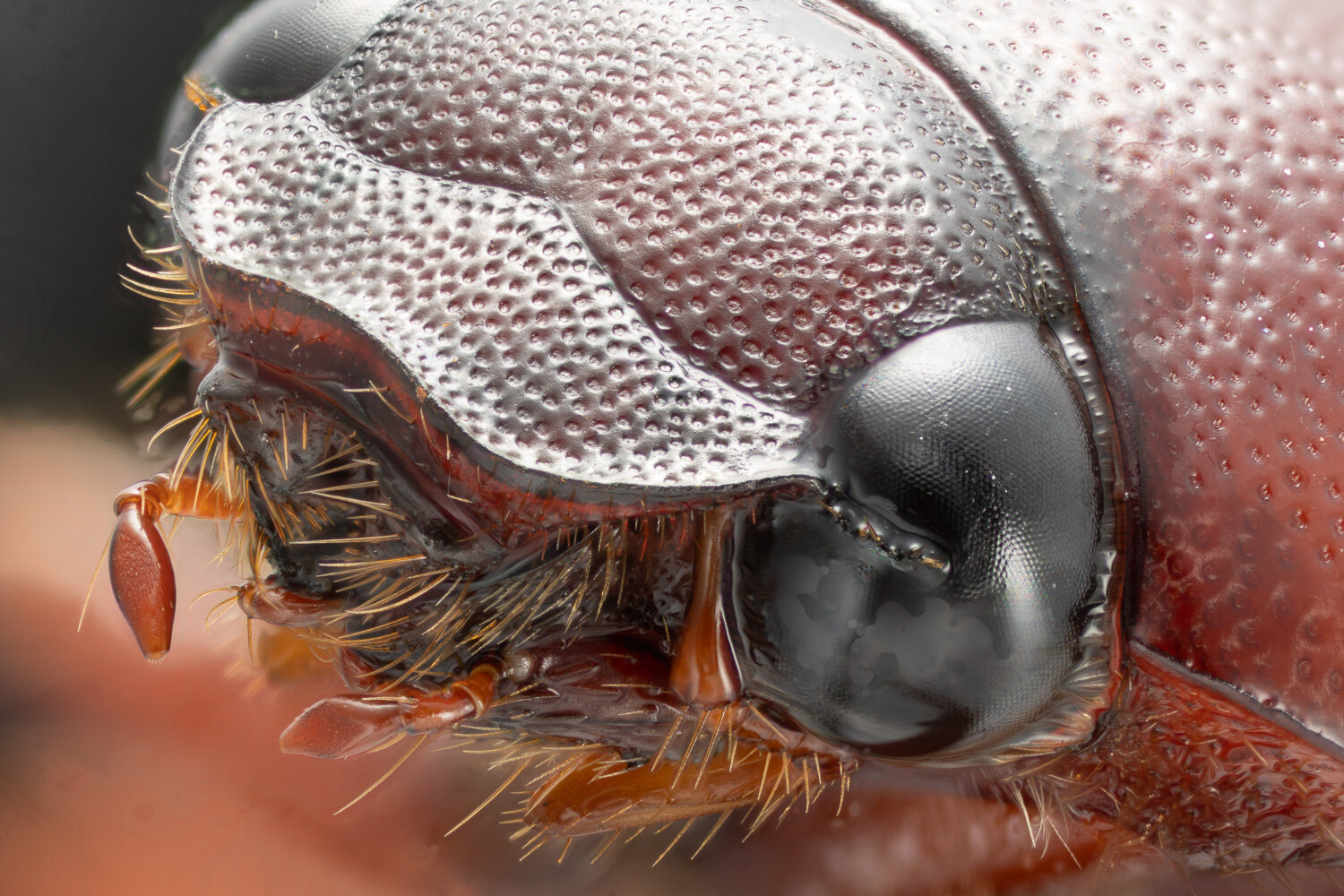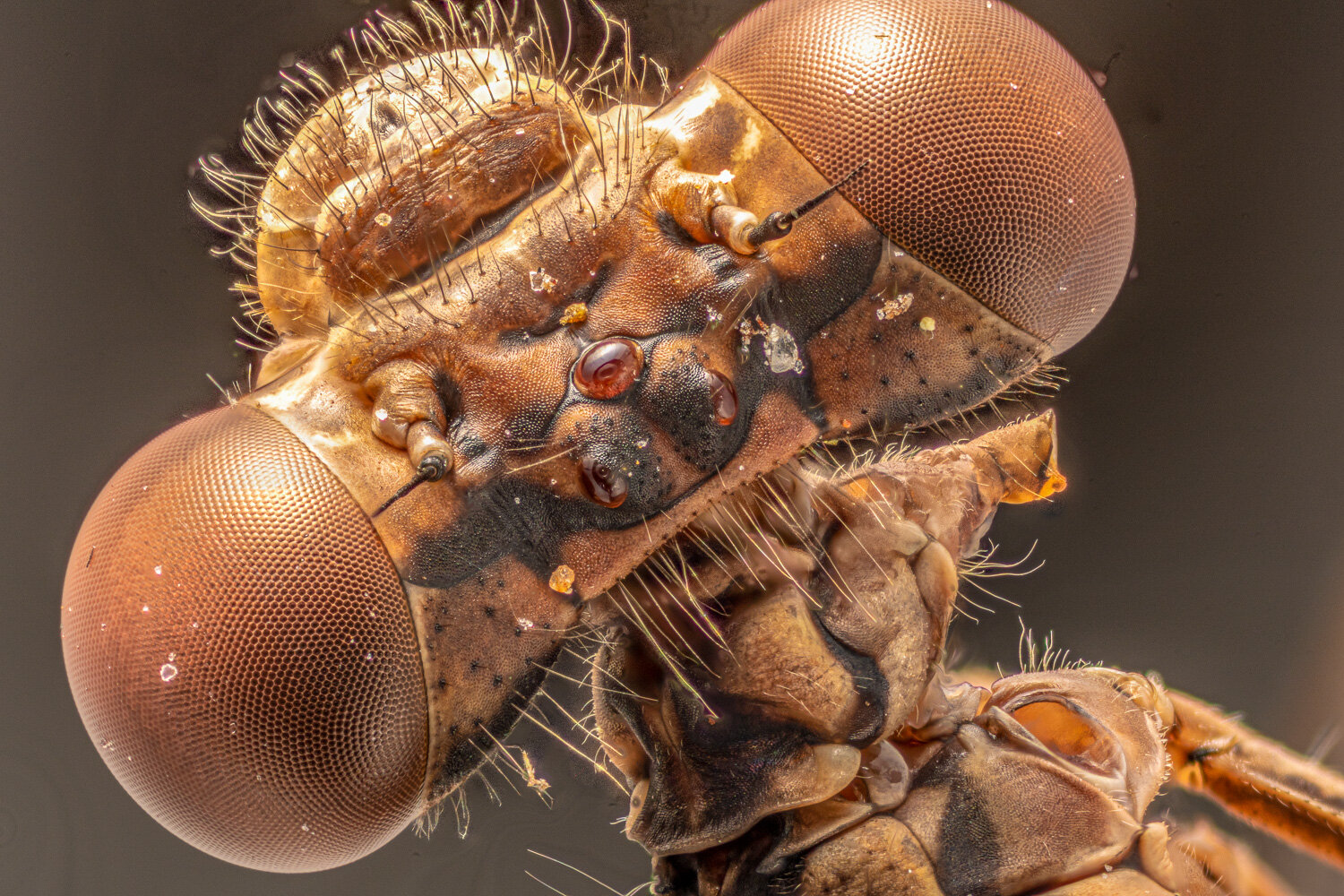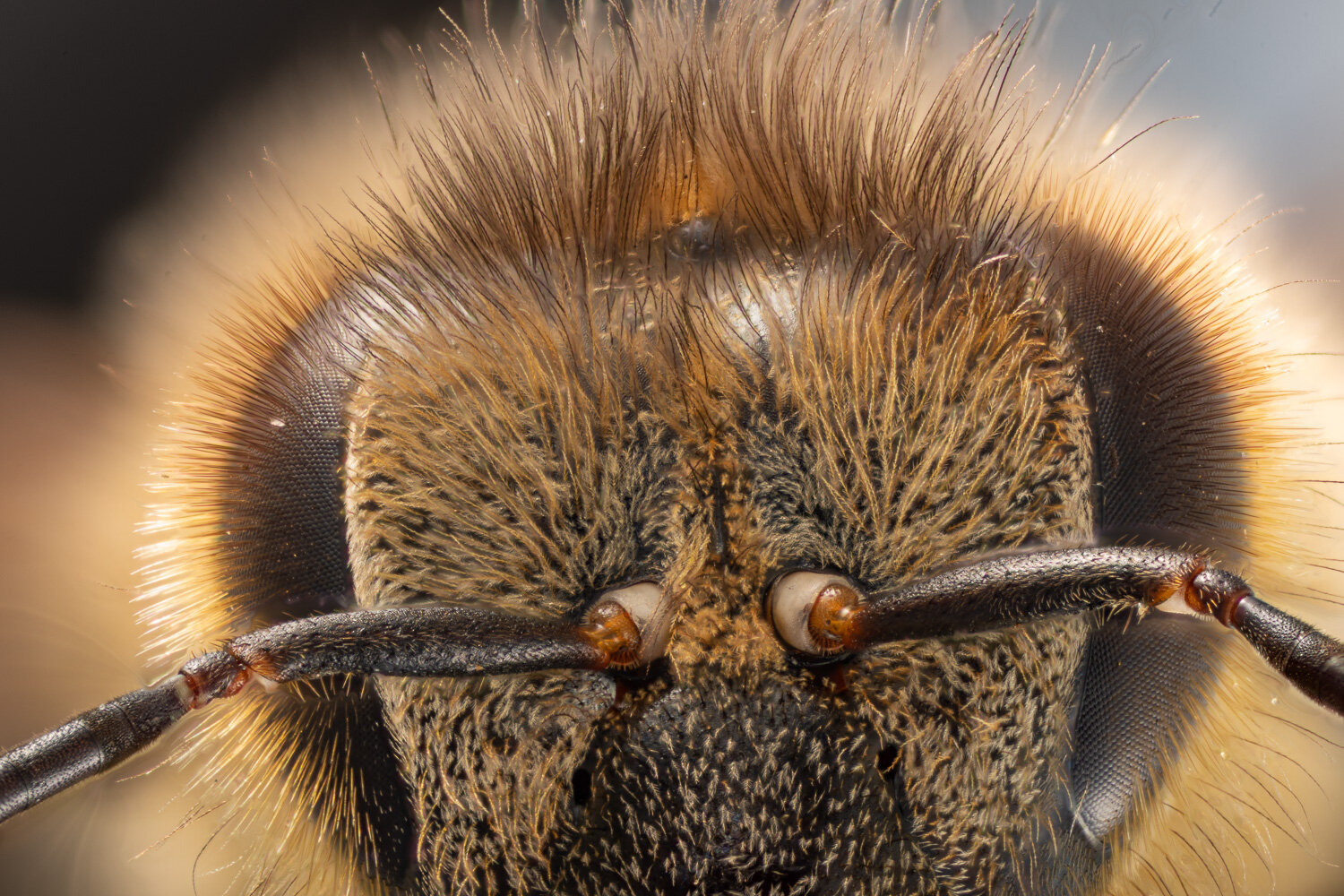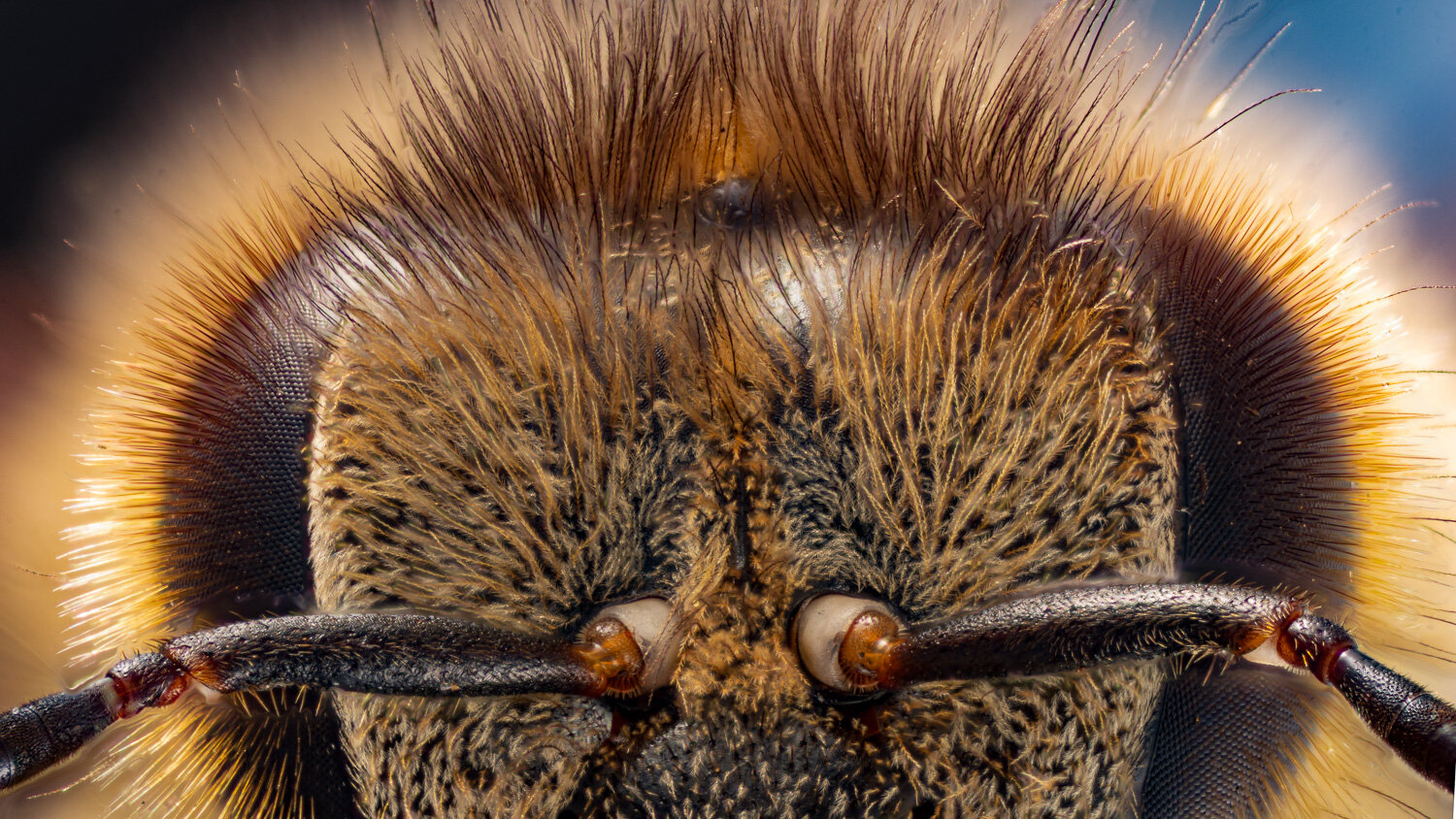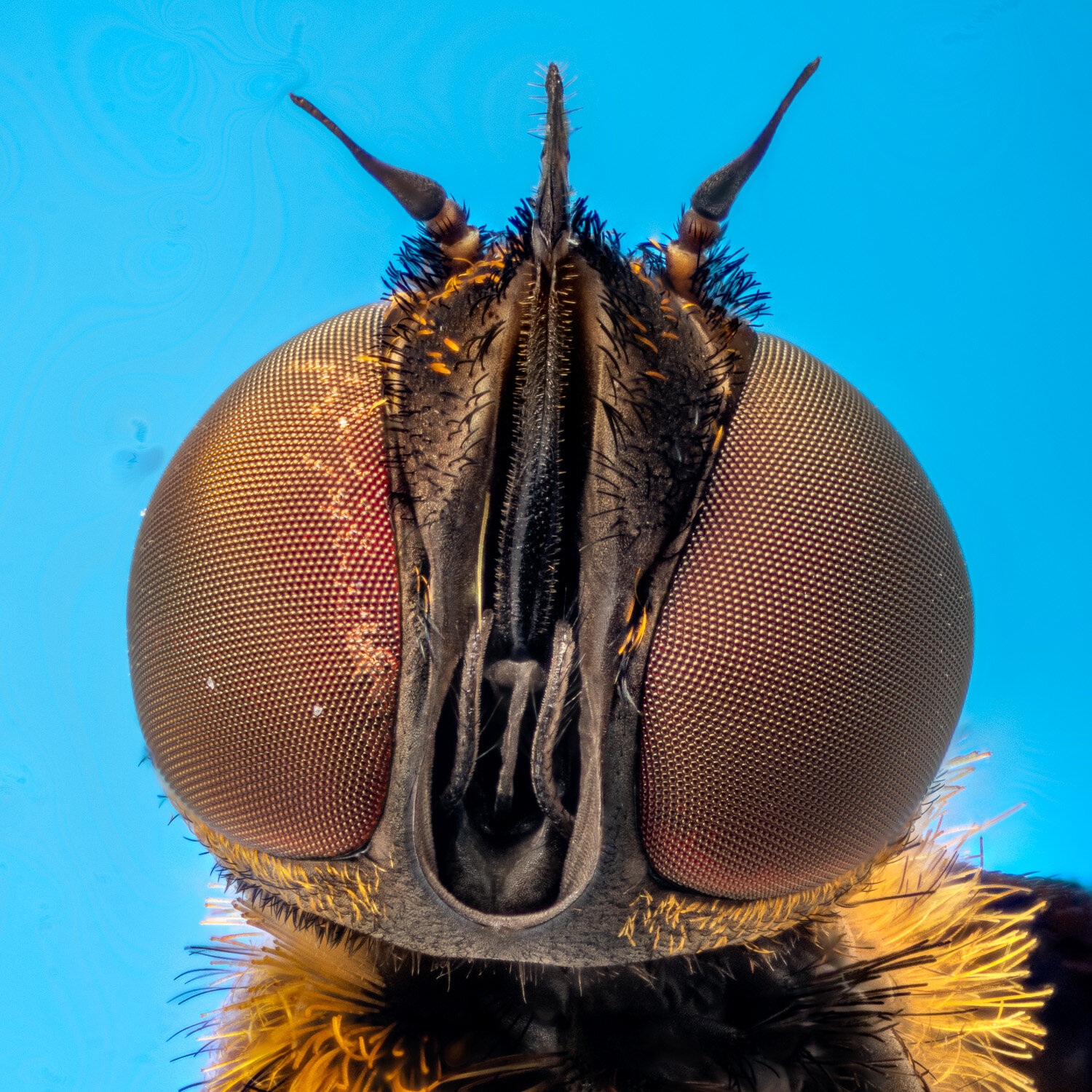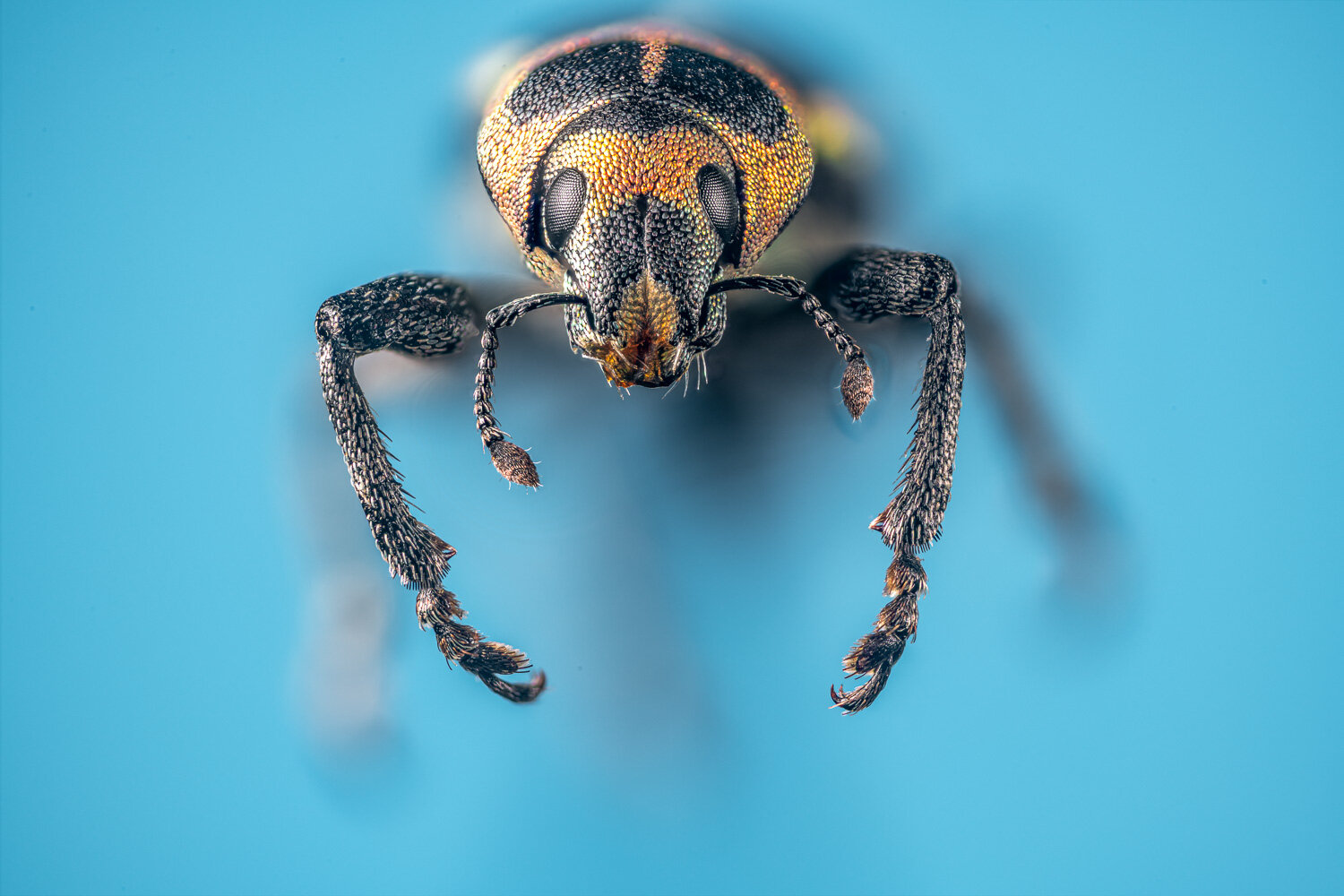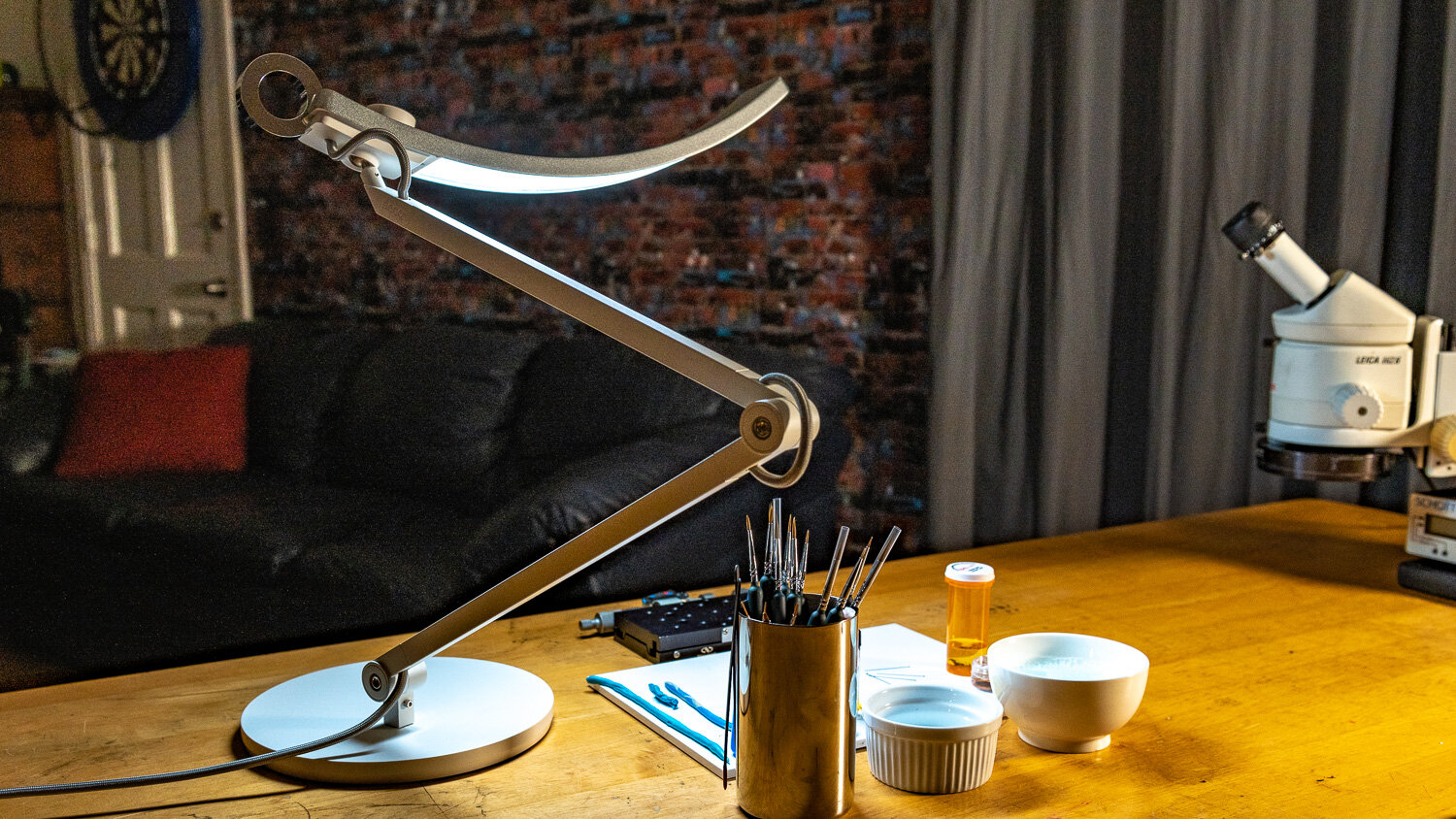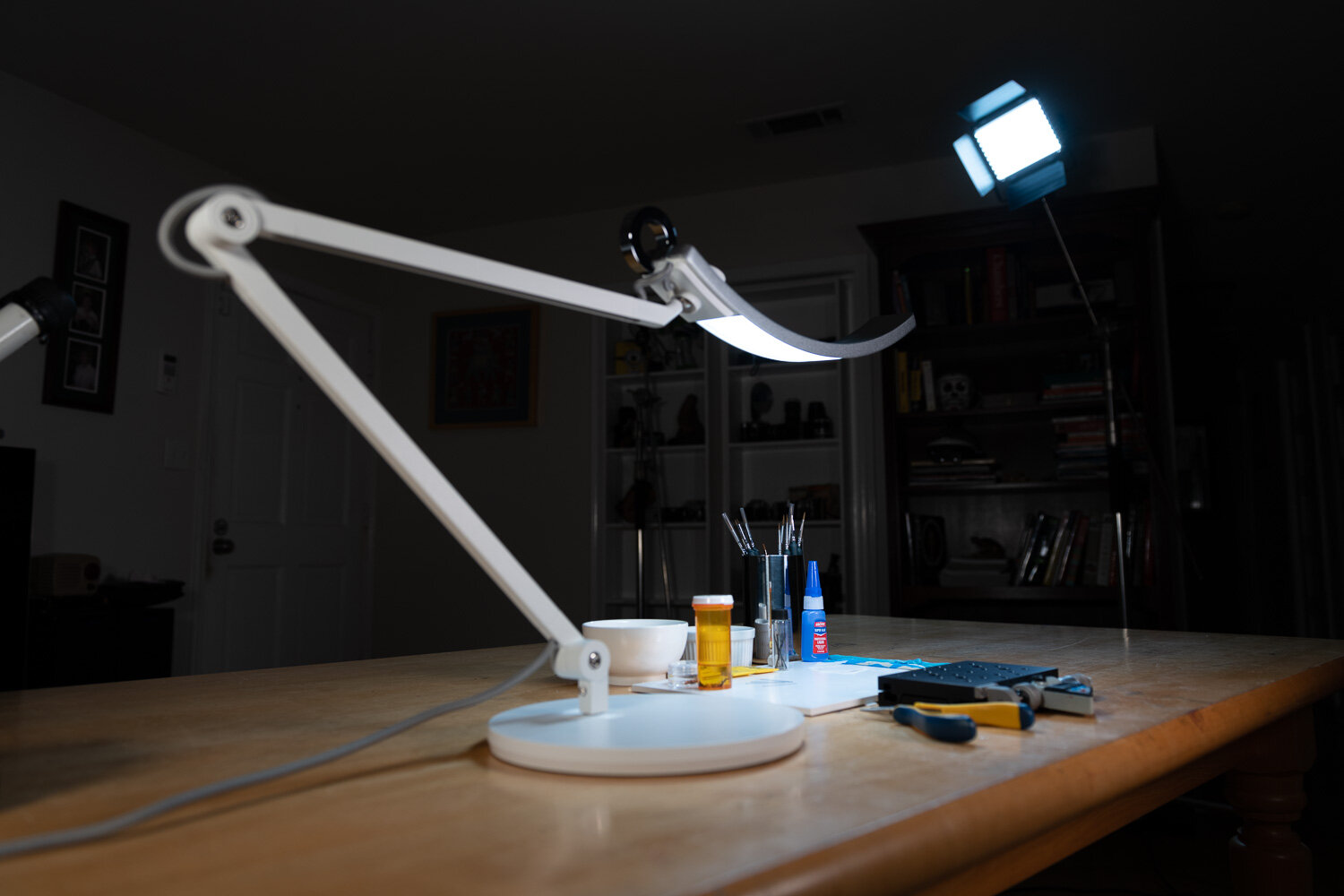A Macro Work Light from BenQ
/BenQ seems to think that this table lamp is for reading…
… so I’m guessing Ben is not a macro photographer. Because if he was, he would realize that his engineers have designed the perfect lighting solution for the tedious work of preparing insects for macro photography.
A picture speaks a thousand words, or 20, maybe
I was asked to review this beautiful table lamp after being invited to evaluate the Screen Bar Plus, another lighting solution from BenQ. The Screen Bar is a well engineered LED light that attaches to a computer screen and delivers automatically adjusted illumination to the workspace, without flicker or glare, and without interfering with the brightness of the screen. And I love it. But since getting the Screen Bar I have been eager to see if the same technology could also address my biggest lighting issue - one that I have been dealing with for a decade or more.
This is the corner of a mosquito’s eye. Seriously.
As a macro photographer, I take closeup photographs of small things. I have been mesmerized by photographs of the unexpected and delightful things that lie just beyond the limits of our vision since childhood and the fascination has only increased with age. There is so much to see and so little time to find it! But just seeing the wonders of the macro-verse around us was never quite enough. I needed for you to see it too. Living with one foot in this strange, alien hidden universe changes the way we look at the part we can see. It is impossible to gaze on the staggering diversity of the macro world all around us and not feel awe and wonder at the complexity of it all. But, as a perfectionist, a trait common in extreme macro photographers, it is a fact of life that these images can never be good enough. They can always be sharper, clearer, better composed, more cleverly lit, and cleaner. Yes, they can always be cleaner.
Getting you subject looking its best is a large part of macro photography, at least in the studio it is. There is quite a bit that can be accomplished to clean a bug after the photograph is taken, if you know how to use a tool like Photoshop, but most studio extreme macro photographers would rather not have to do a lot of retouching. The goal is always to get as much of the work done with the camera as possible, which means the dirt, oil, spores and other detritus that finds its way into every nook and cranny of your specimen is going to have to be removed.
This is not a terribly difficult task when your specimen is a five-inch praying mantis, or even a one-inch dung beetle. But it gets a little trickier with a ladybird, and harder still with a housefly. Imagine, then, how one would go about thoroughly cleaning the gunk from the eye of a mosquito.
Well, that is what I do every day. The great majority of my work is with subjects measuring only one or two millimeters. As you can see in the photograph at the top of the page, one indispensable tool is my microscope, and a lot of my work is done while observing the process through a high quality dissecting microscope, like this Leica. But there are several processes that have to be done without the aid of the microscope, and using only a pair of surgical loupes or a magnifying glass. Without the perfectly balanced light of the microscope’s ring illuminator I have to rely on a separate light source, or several, to see the tiny subjects clearly enough to clean and position them well. Until now, the ideal lighting solution for this kind of work has eluded me entirely. I have used every conceivable light source at one time or another, from LED lamps to large halogen flood lamps, and from fiber optic cables to a miner’s headlamp. I have used them all, and they all have drawbacks. Either they are not sufficiently bright, or they are too bright. They add glare, or they flicker, they change the insects’ colors, or introduce heavy shadows, there is always something. Until now.
The elegant and powerful BenQ e-Reader LED Desk Lamp
The research team from BenQ had been in contact with me since the spring of this year, when I submitted a paper outlining the lighting challenges posed by the macro photography insect prep work flow. I had given them a detailed description of the specific problems encountered during each step of the insect preparation process. I communicated with the team through one of two talented and personable BenQ employees, Tin and Bella, who were always professional and helpful. BenQ really went out of their way to make my problem their problem.
If you would rather watch a review than read one, this has you covered - the video also contains several additional features that you might enjoy.
Macro photography insect prep was not something that had been on the BenQ radar prior to that, but no sooner had they recognized the issues, they had a proposed solution. As you are aware, the company is known for their high-end computer monitors, and projectors, but they have been developing lighting solutions for creatives and video professionals for a long time. Even with all that experience I sensed there was some uncertainty around this unusual application. There needn’t have been.
The unique ball and socket hinge makes positioning a breeze
The e-Reader LED Desk Lamp is heavy and built to last. the base is a solid block of metal. In fact the whole thing is made of metal that has a powder coated finish. Mine is off white, but they also come in a selection of classy colors; gold, silver, blue, and this shade of white. The lamp itself is curved both on the long axis and transversely, resulting in an unexpectedly large and diffuse pool of light.
Even at this low setting the light completely covers the work surface
Because of this, the light feels omnidirectional and working directly under the light there are very few shadows cast and little or no glare. I prefer to use the lamp higher up for some steps in the prep process, but for the close-in work it is perfect when positioned as in the photograph above. The light is very nicely diffused and has the added bonus of being a very versatile photographic light source (I take a lot of phone pictures and video clips for educational purposes - and this is the ideal light source).
The design of the controls is elegant and functional
The electronics are similar to those in the Screen Bar Plus, though the desk lamp has a touch on/off in the form of a silvered “Q” - a very nice touch - if you will forgive the pun. The light can be operated in automatic mode, the red indicator light glowing when active, and it does a fantastic job of balancing the output by sensing the ambient light in the room. It can also be used in manual mode with both intensity and temperature controlled by the single knob, pushing the button switches between the two. Even the cable has been well thought out. It is a heavy duty cable with a woven fabric outer cladding, that looks luxurious and durable at the same time.
The BenQ e-Reader Desk Lamp is a great addition to my studio and, functionally, it has far exceeded my expectations. Let me add that when BenQ suggested this lamp as a solution, I was not expecting it to work for my needs, thinking a more directional light would be better. I was dead wrong and have used this lamp every single day for the last four weeks. Nice work, BenQ!
***
In case you are interested in this lamp, below are a couple of links you may find helpful. One is for the BenQ store and the other an Amazon link. The Amazon links are affiliate links, meaning that I may make a small commission for qualified sales made using the link.
The BenQ store can be found here
